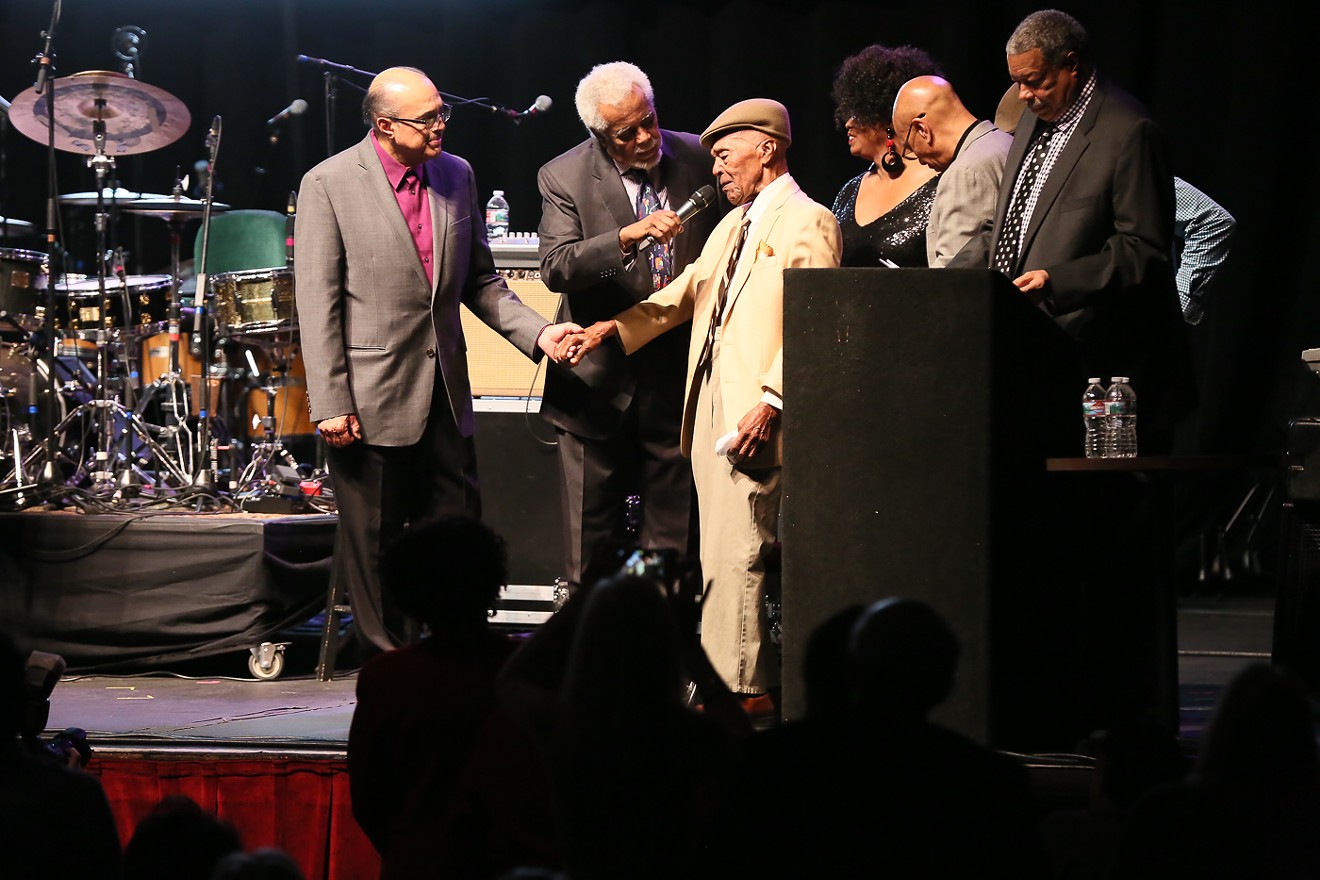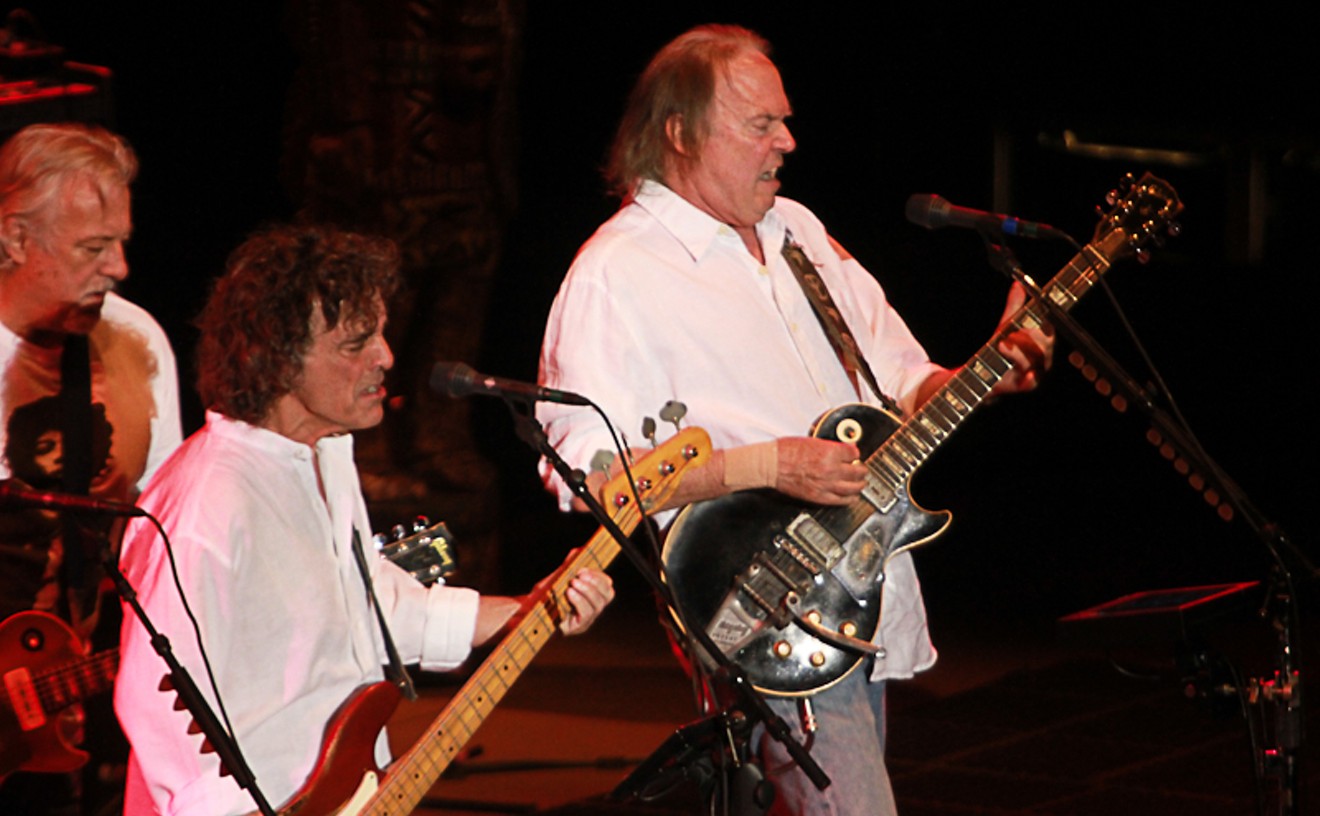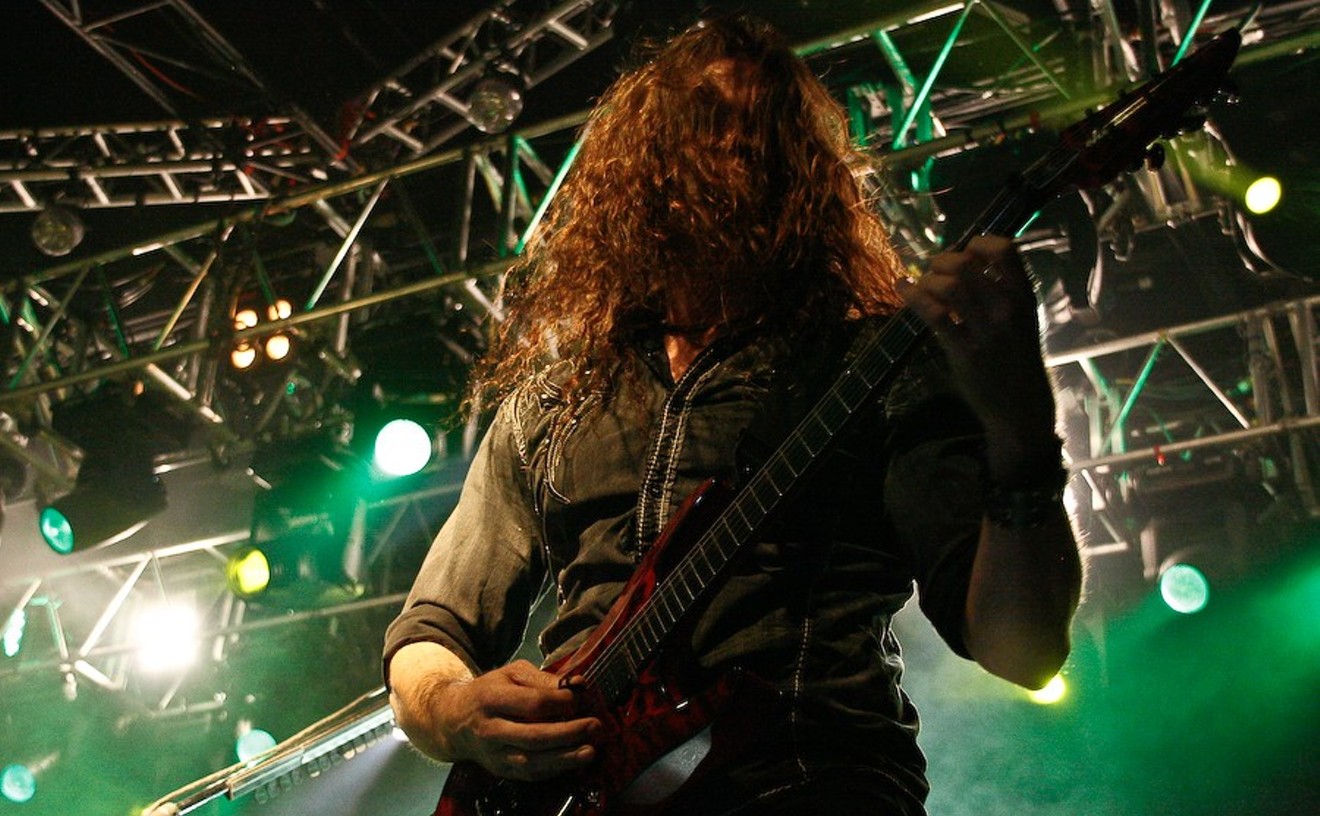Burrell is known for a long and fruitful career that helped break the color barrier in classical music. In 1949, he became the first Black musician to receive a permanent contract with the Denver Symphony Orchestra, which became the Colorado Symphony in 1990. The now-101-year-old retired from the Colorado Symphony in 1999, but his influence as a trailblazer and role model continues today, and organizers hope the portrait will help spread his story.
The unveiling ceremony will be followed by resident conductor Christopher Dragon leading the symphony through Gioachino Rossini's William Tell Overture, Eduard Tubin's Concerto for Double Bass and Edward Elgar's Enigma Variations, Op. 36.
“History was made here,” says Burrell’s cousin Purnell Steen, a longtime Denver jazz pianist. “I was there at [Burrell’s] first concert.”
Steen says he approached Anthony Accetta, a member of the Colorado Symphony board of trustees and chairman of the education committee, a few months ago to discuss a portrait of Burrell to acknowledge his legacy. The Colorado Symphony celebrated Burrell's birthday in 2019 with a performance of Pyotr Tchaikovsky's Symphony No. 4, but the portrait makes a permanent statement, Accetta says.
Burrell's portrait “[honors] a man for his accomplishments,” says Accetta. “It’s not just about the color of his skin, even though the color of his skin is part of his story. This is someone who deserves credit for a fifty-year career.”
“The two words that really describe Charles are 'perseverance' and 'resilience,'” Steen says. “Every time he got knocked down, personally or musically, or suffered some indignity, he got back up, more determined to continue on his path.”
Burrell first picked up a bass in seventh grade at the invitation of his school's orchestra, and he immediately found a connection to it. He was additionally driven to practice after hearing Tchaikovsky’s Symphony No. 4 played by the San Francisco Symphony under director Pierre Monteux, and he aspired to someday play in that same orchestra.

Burrell's portrait will be included next to those of former music and choir directors.
Brandon Marshall
In the late ’40s, Burrell left for Denver, where he has family ties. Through happenstance, he met John Van Buskirk, the Denver Symphony’s principal bassist, on a streetcar. Buskirk urged Burrell to audition for the orchestra, and he was hired in 1949.
After playing with the Denver Symphony for ten years, Burrell moved to San Francisco, where he was the first Black person hired to play for the San Francisco Symphony. In 1965, Burrell returned to the Denver Symphony, where he remained for the rest of his professional career.
In addition to his classical credentials, Burrell was also an accomplished jazz player. He performed with such notable musicians as Charlie Parker, Duke Ellington, Ella Fitzgerald and Billie Holiday.
“It took a lot of talent to master both [classical and jazz], and he just did it really humbly,” says Steen. “A lot of times he just did it out of his love of people and his love of music and his love of his fellow man.”
Burrell also became a teacher and a mentor. He taught at the San Francisco Conservatory of Music and mentored acclaimed musicians such as keyboardist George Duke and multi-Grammy Award-winning vocalist Dianne Reeves, Steen says. Burrell even mentored Steen from the young age of three and a half.
Burrell recently became the namesake of an Aurora arts magnet school called the Charles Burrell Visual and Performing Arts Campus.
“It amazes me, the depth and the breadth of his influence,” Steen adds.
“He likes to be referred to as the Jackie Robinson of classical music,” Accetta says. “I prefer to call him the Charles Burrell of classical music.”
The unveiling of the portrait of Charles Burrell will take place on Saturday, December 4, at Boettcher Hall in the Denver Performing Arts Complex. Doors open at 6:30 p.m., and the unveiling is at 7, followed by a Colorado Symphony performance at 7:30. Tickets, $15 to $89, are available on the symphony website.











